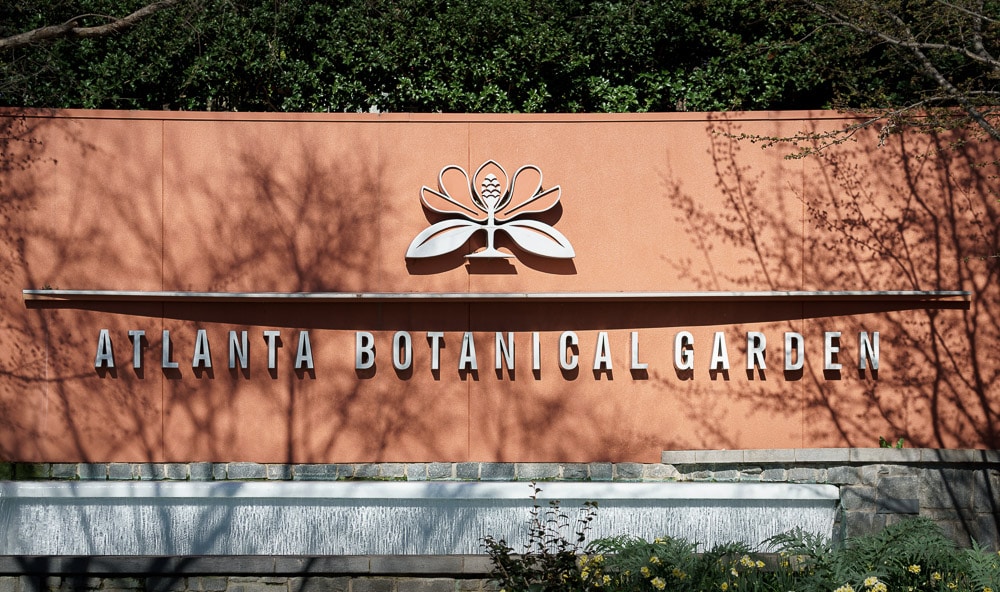Atlanta is a city that is full of surprises. If you’re looking for a unique experience, Atlanta Botanical Garden is a great place to look for them. The Garden features beautiful walks, dozens of showcase gardens, and incredible Dale Chihuly glass sculptures.
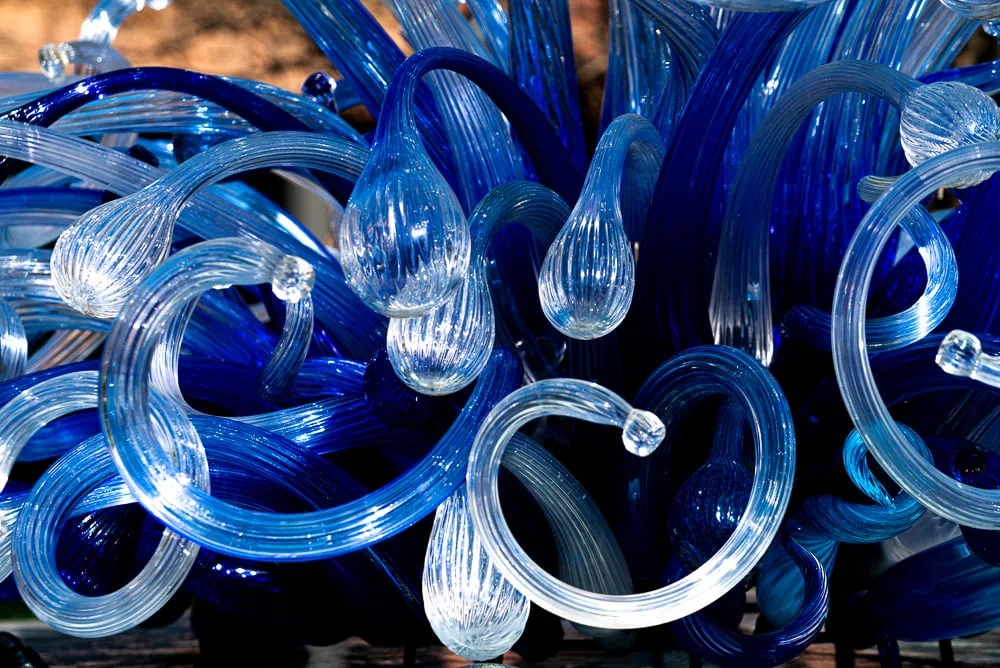
In addition, the Fuqua Orchid Center has an Orchid Display House that features thousands of orchid blooms. If you’re in Atlanta during early spring (or any time of year), make sure to visit the Atlanta Botanical Garden!
Discover Atlanta describes it best as –
“An urban oasis in Midtown (Atlanta), the Garden includes 30 acres of outdoor gardens, an award-winning Children’s Garden, a one-of-a-kind Canopy Walk through Storza Woods, and the innovative Edible Garden featuring an Outdoor Demonstration Kitchen.
The Fuqua Conservatory is an organic biosphere and home to important collections of tropical palms and conifers; the Fuqua Orchid Center is home to the foremost collection of species orchids in the United States.
Conservation gardens and amphibian displays highlight the Garden’s work with carnivorous plant bogs across the Southeast as well as endangered species of frogs from around the world.”
Arrival at the Atlanta Botanical Garden
The Atlanta Botanical Garden is located adjacent to Piedmont Park in Midtown Atlanta, Georgia. The entrance on Piedmont Ave was easy to find, and there was plenty of parking.
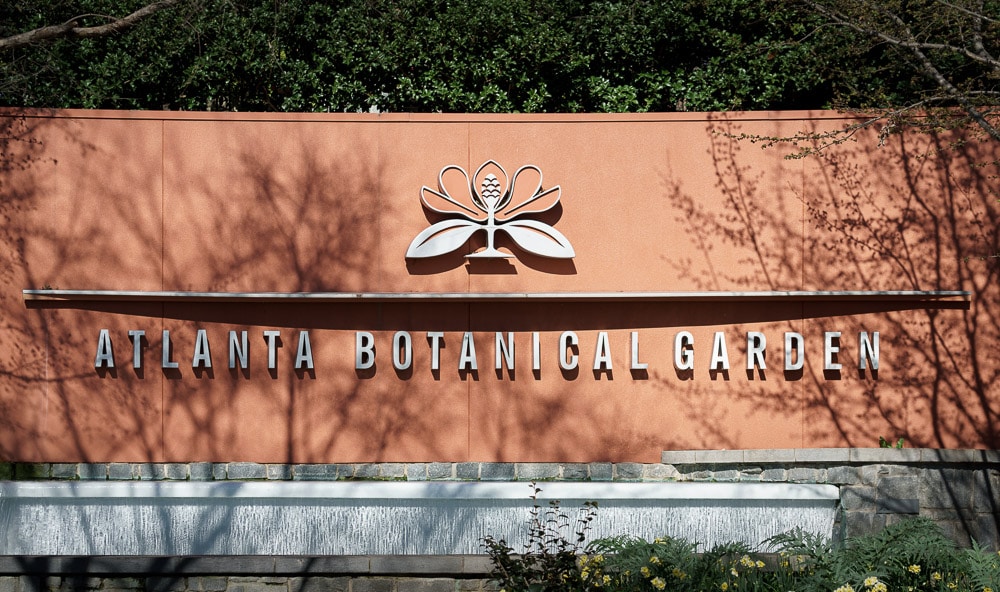
The entrance area has a great waiting area with benches, flowers, and a fountain to get your party together before entering the Garden.
Exploring the Gardens
Japanese Garden
In the 1960s, long before the Garden was built, the Atlanta Bonsai Society planted a Japanese Garden on the site of the current one. In 1980, after being renewed, it added a tiny pond and additional stone walls and fences. The present style blends several types of traditional Japanese gardens into one.
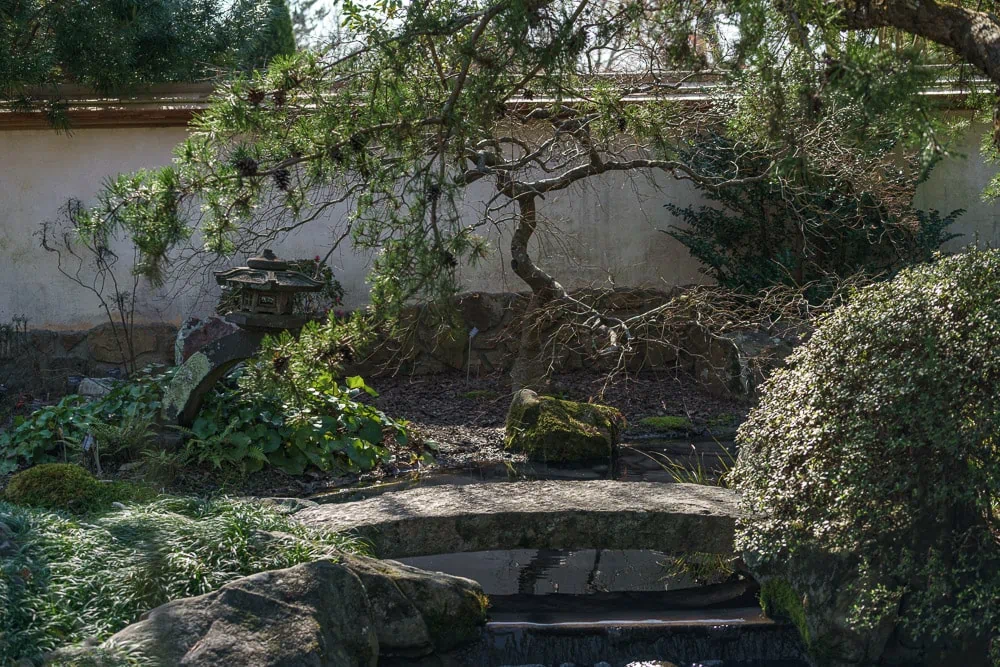
On the ground is a chozubachi stone basin used as a purification ritual before a tea ceremony. The tea garden also includes a waiting bench for reflecting and enjoying the space.
Behind the Japanese garden is a wonderful zen pool called the Ferst Fountain. This lovely installation by Atlanta artist Christine Sibley features water naiads (or lotus ladies) represented in bas relief peering out from behind the waterfall.
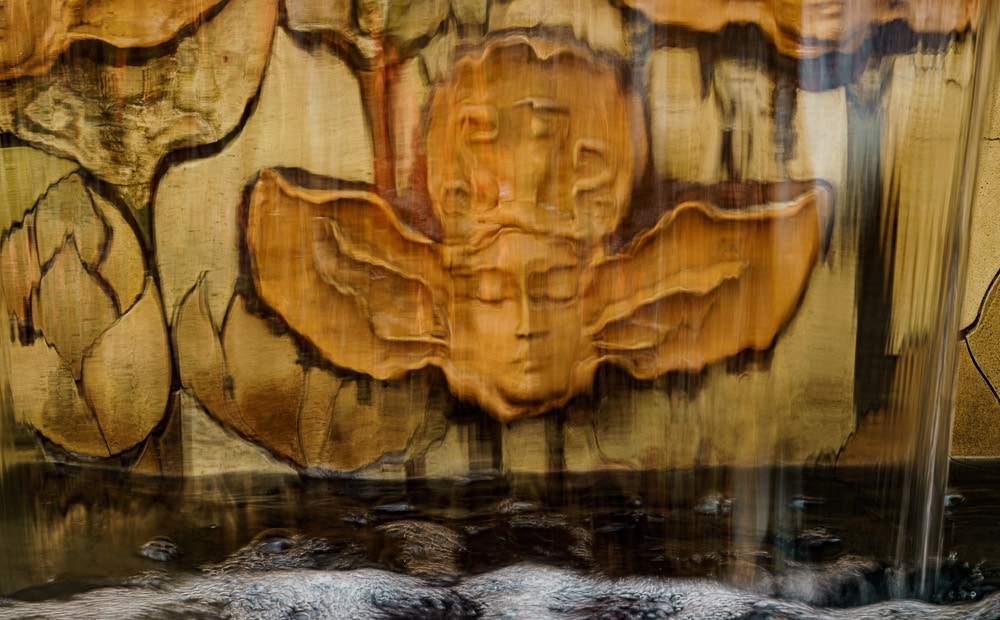
Levy Parterre – Chihuly
The Levy Parterre is the most formal garden design on the premises, based on 17th-century French medieval knot gardens and Korean boxwoods surrounding four central beds. They, in turn, are surrounded by beds of flowers.
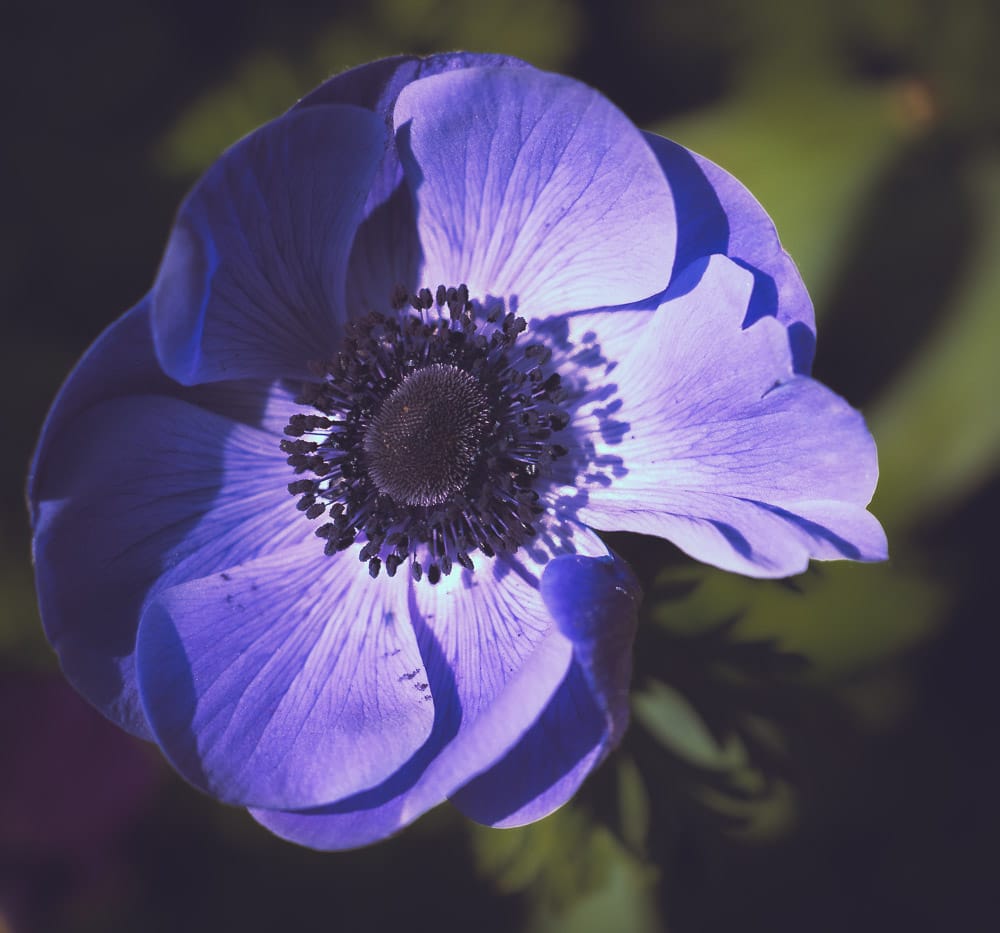
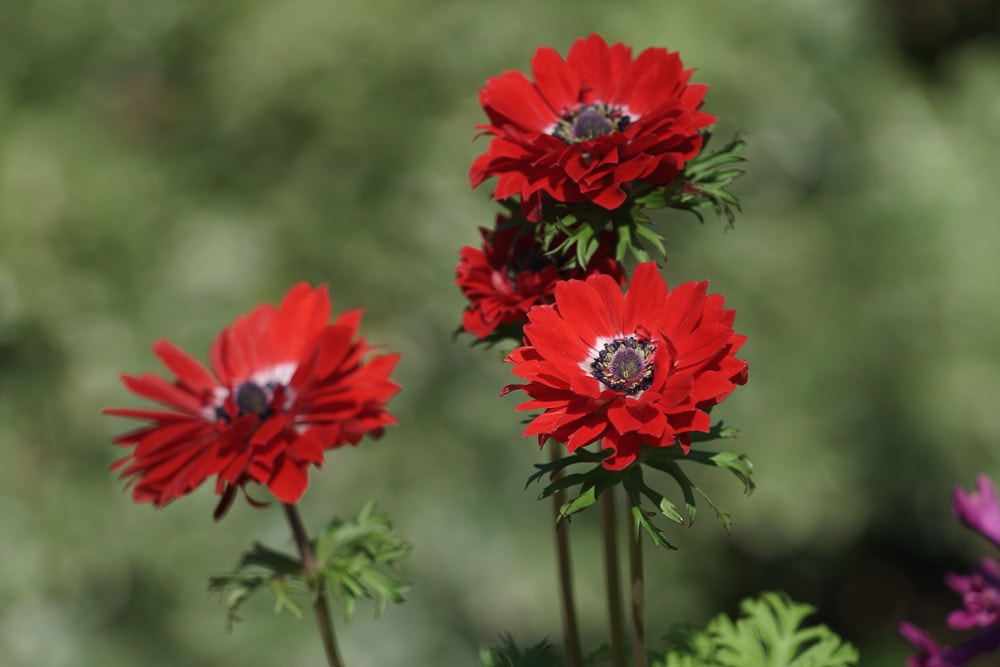
An Italian limestone fountain anchors the Parterre, topped with Dale Chihuly’s Parterre Fountain Installation. The fountain sculpture is one of the Garden’s most famous icons and one of several Chihuly works in the permanent collection.
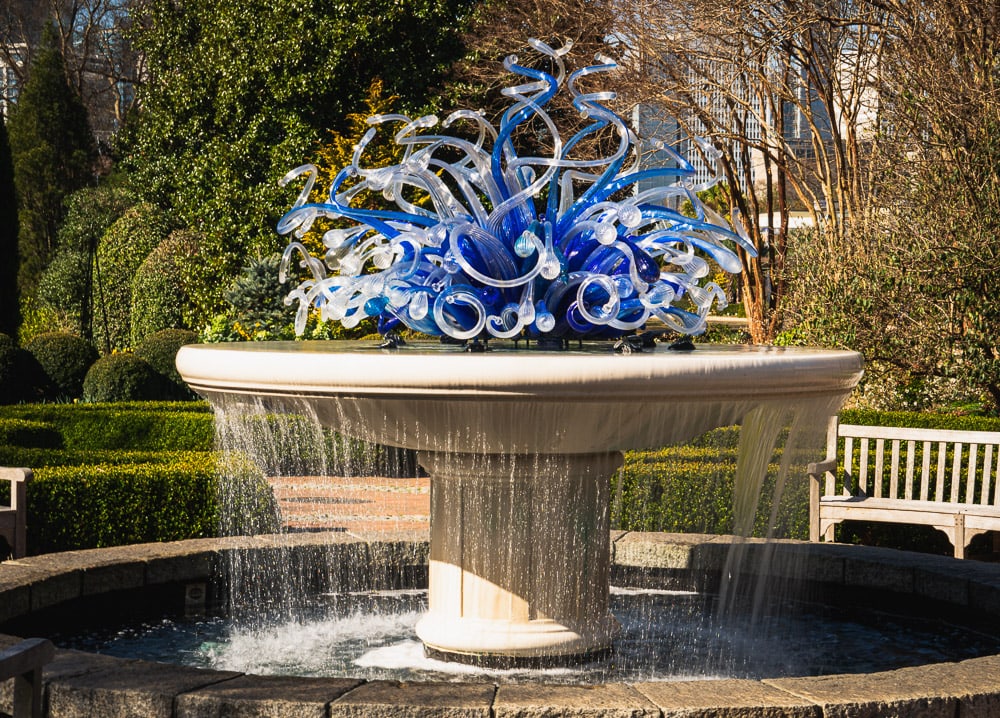
Dale Chihuly’s Parterre Fountain Installation is a one-of-a-kind work in blue and white. This beautiful glass sculpture represents the shapes and colors of water, ice, and sky.

Great Lawn & Vine Arbor
The Great Lawn is just beyond the Parterre Garden. It’s bordered on the east by the Strickland Border and the west by the Color Border and Vine Arbor, where you’ll find a mix of evergreen and deciduous vines, native and exotic.
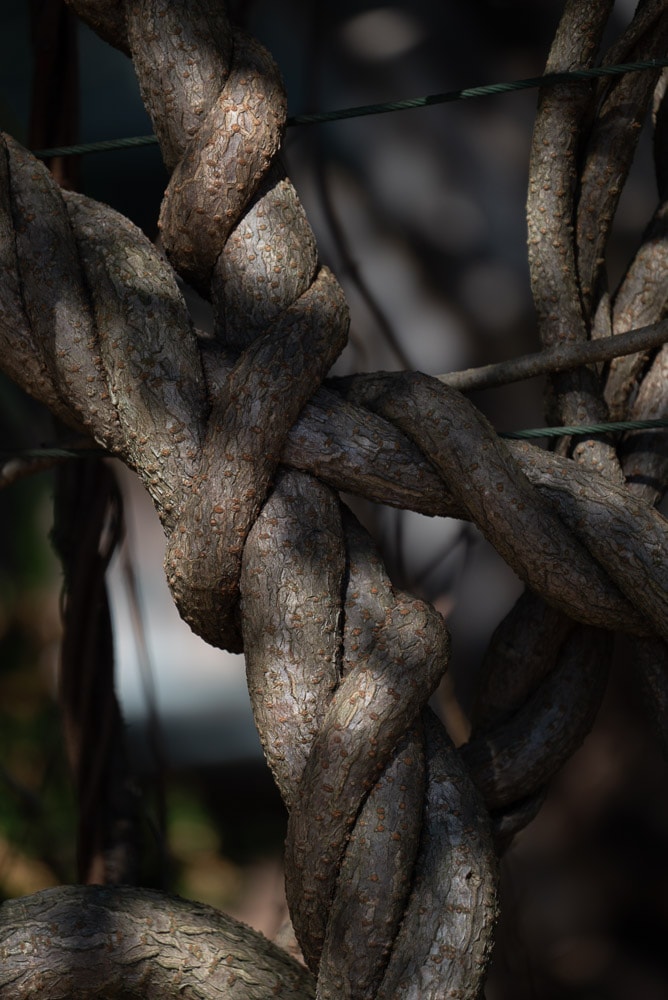
Visiting in early March meant that not too much was in bloom in this area yet. But it’s worth your time to look at the incredible knots in the vines that back the walkway.
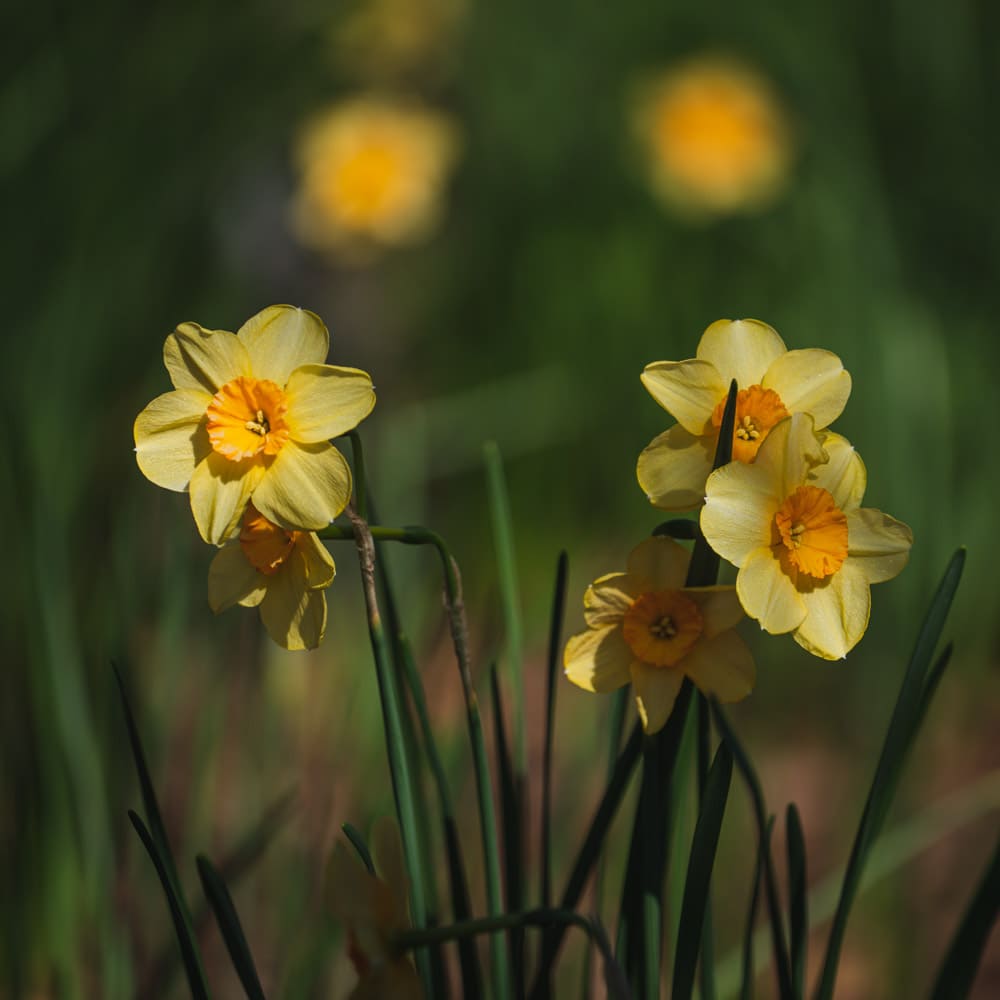
Additionally, there were quite a variety of Daffodils standing sentinel around the lawn. There were even rafts of daffs floating in the pool in front of the Fuqua Conservatory.
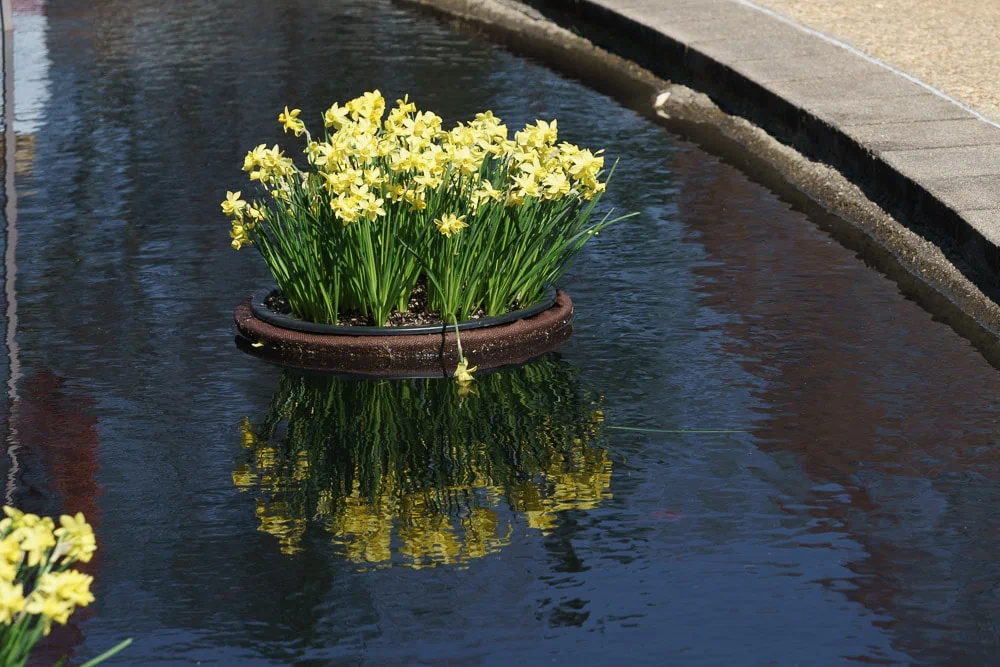
Fuqua Conservatory
The Atlanta Botanical Garden’s Fuqua Conservatory is an organic biosphere and home to significant tropical palm and conifer collections. The Fuqua Orchid Center is home to the foremost collection of species orchids in the United States.
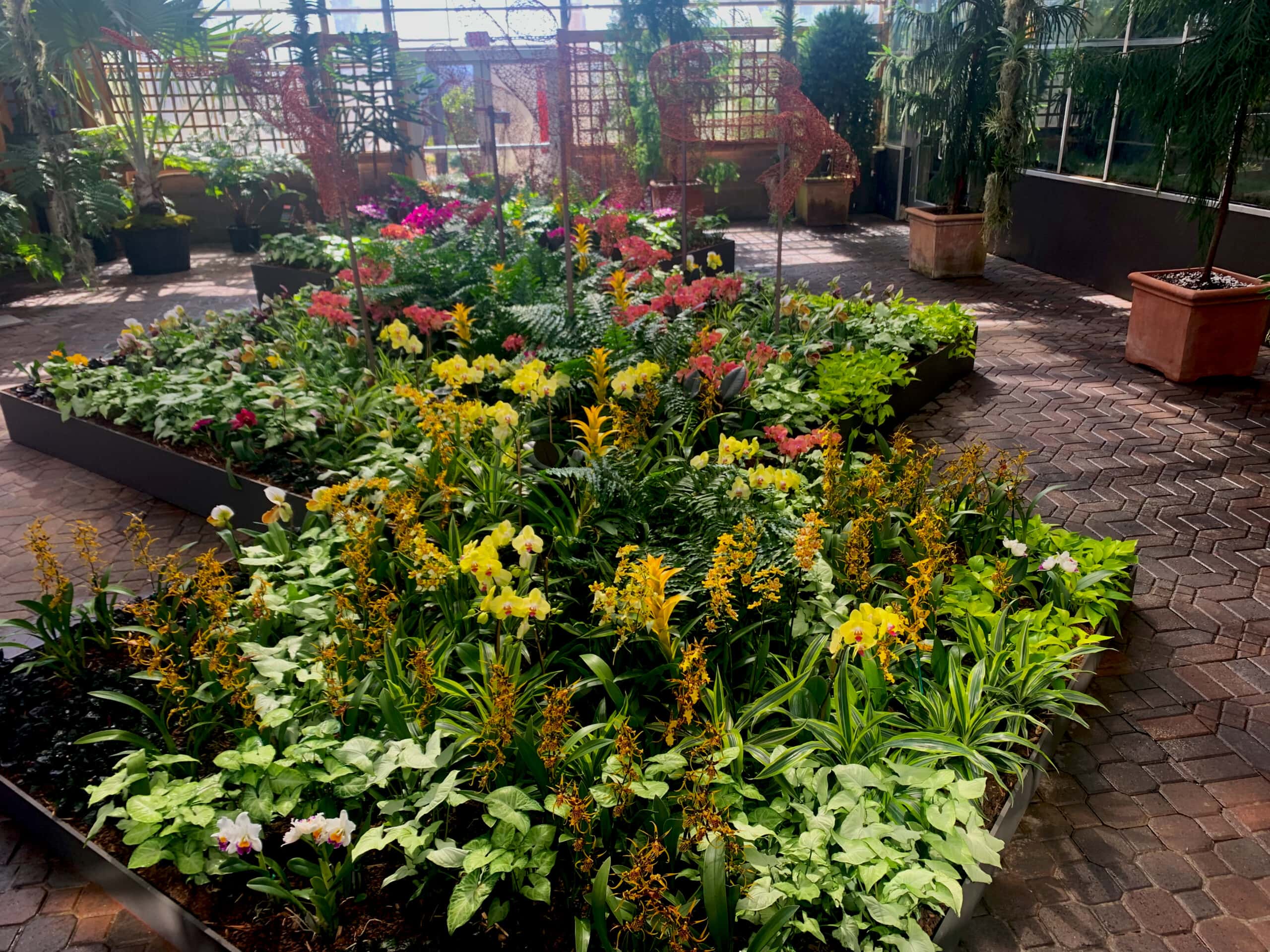
Conservatory Lobby
The most popular exhibit in the Conservatory currently features endangered frogs from around the world. There are frogs from Mexico, Peru, and Costa Rica on display.
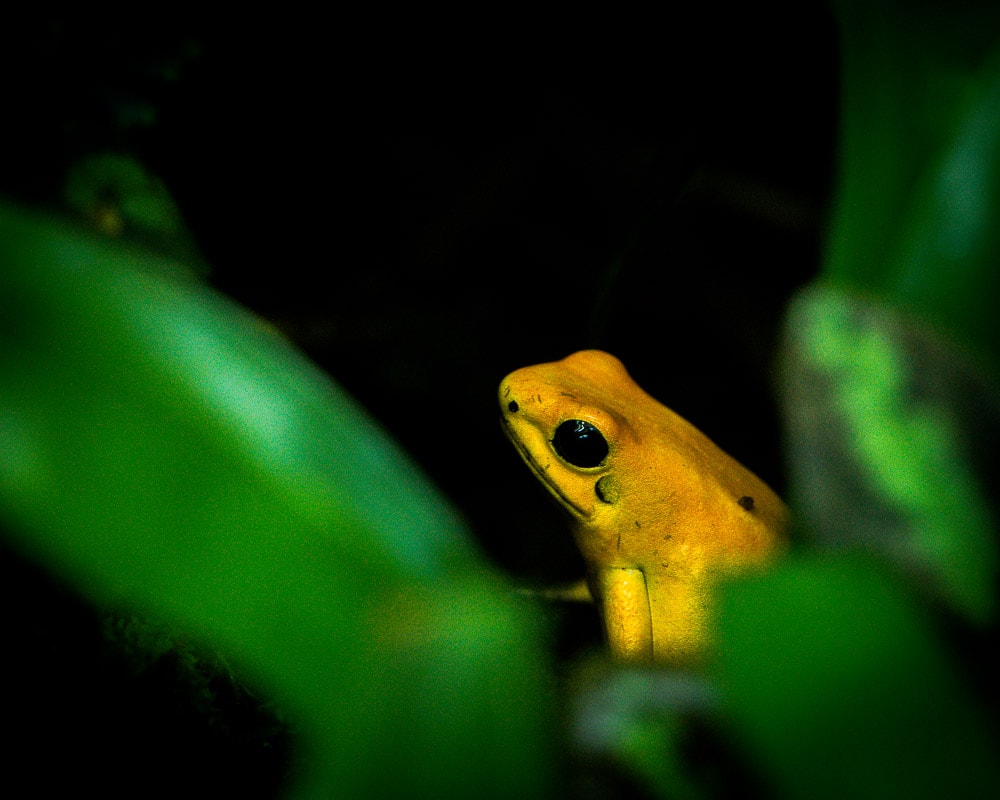
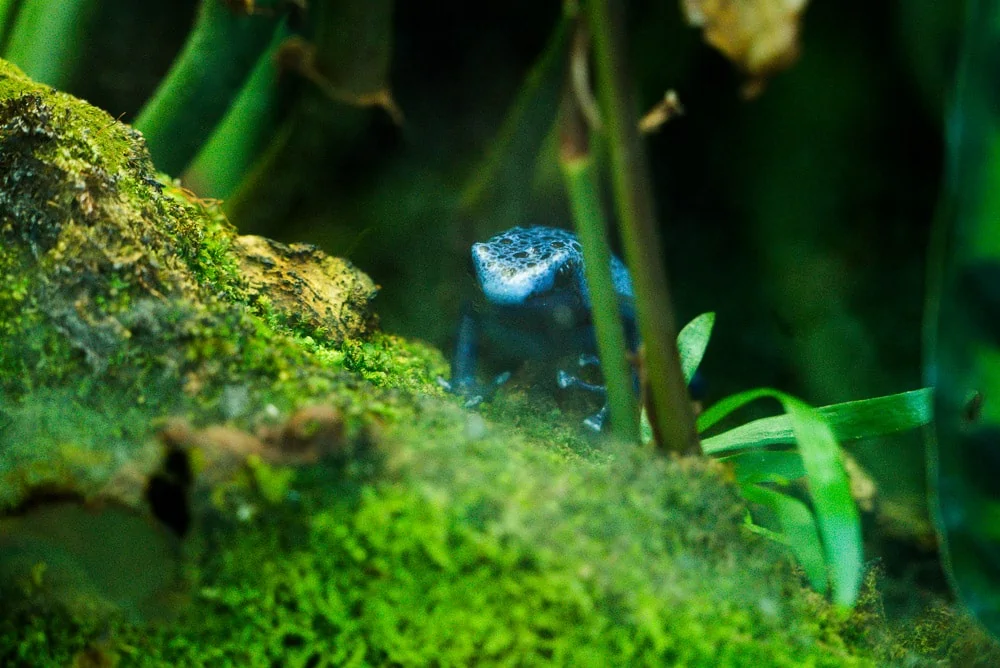
Tropical Rotunda
The Tropical Rotunda hosts hundreds of plant species. This includes plants & trees from Central America’s lowland forests, central Africa, southern Mexico, and southeast Asia.
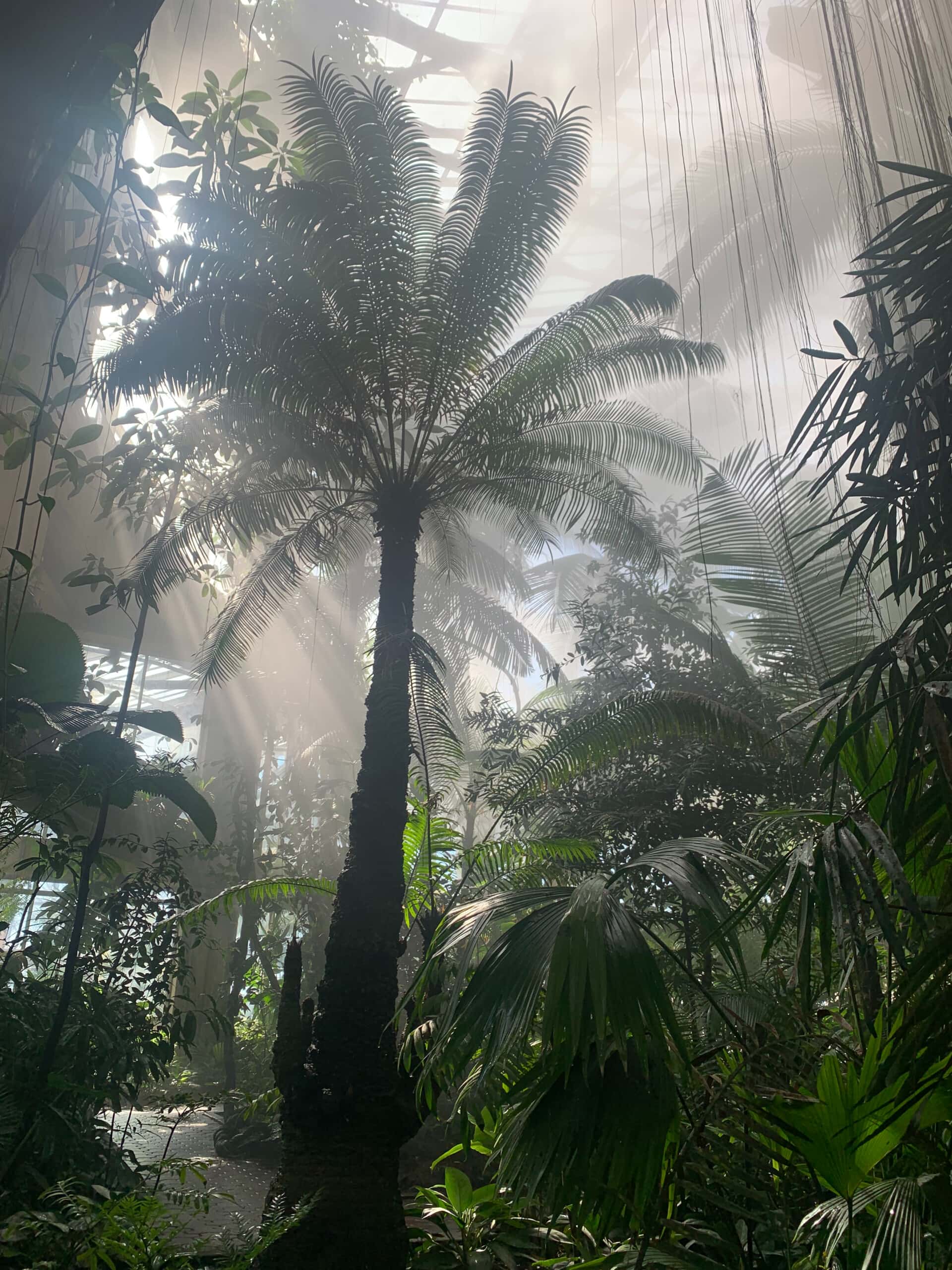
Plants from regions with high degrees of endemism – those that grow natively nowhere else on Earth – get particular emphasis.
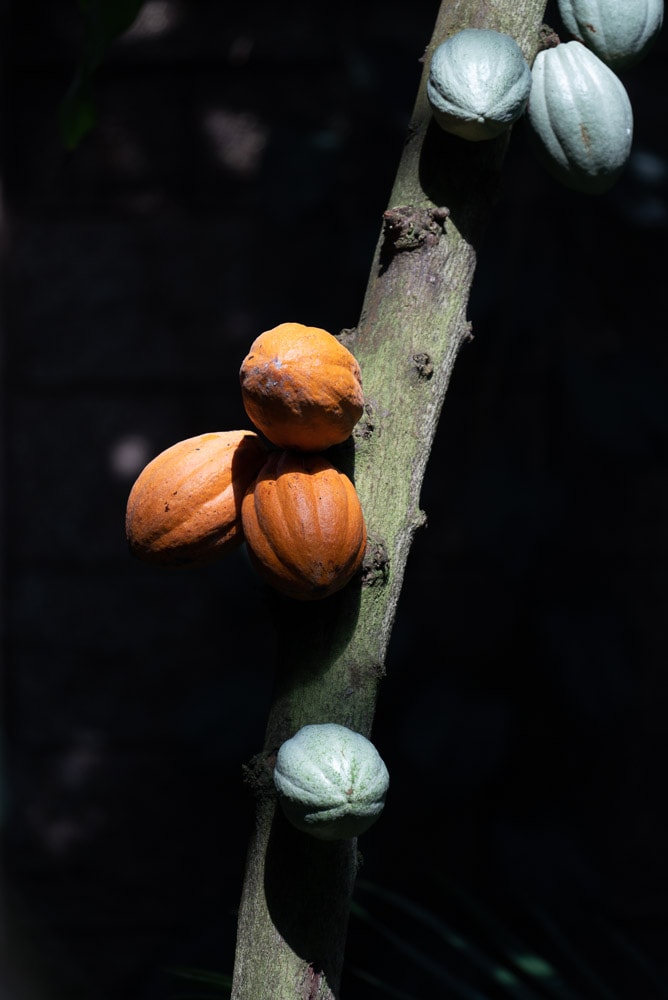
The humidity is maintained at tropical levels in the rotunda. So you might find yourself in a rainstorm listening to the beat of rain on the large leaves.
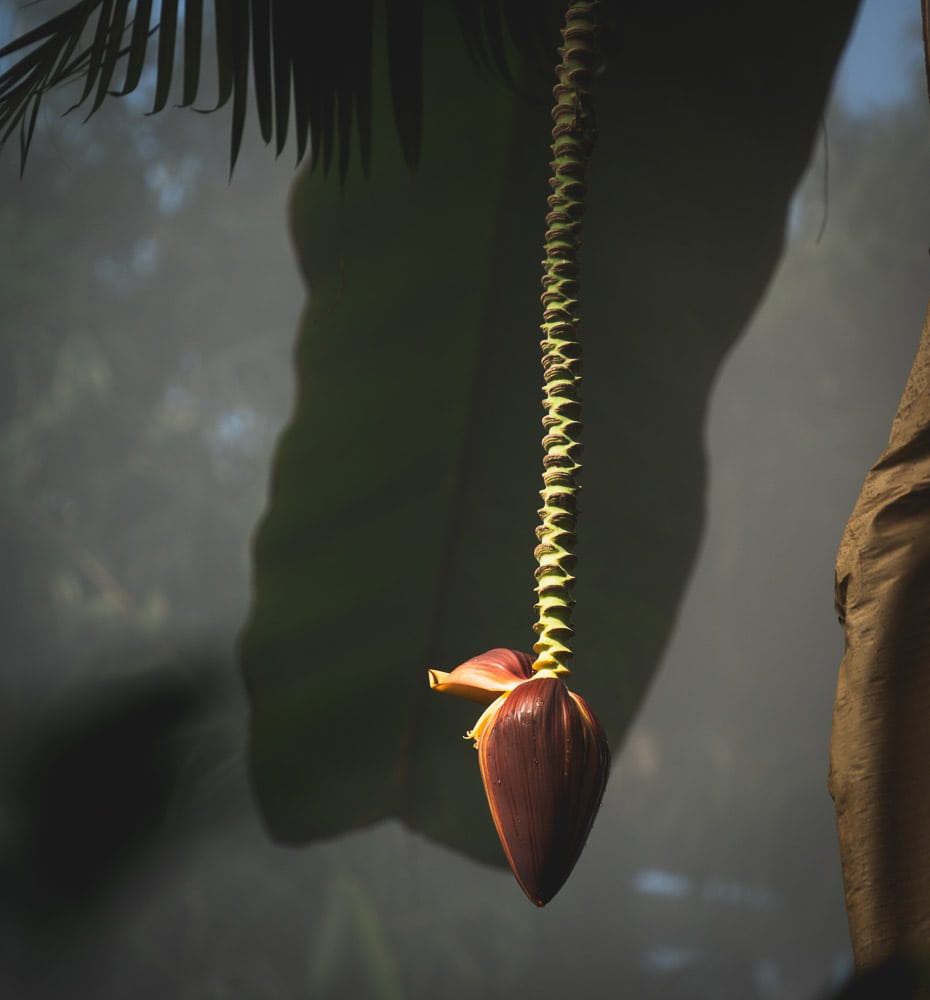
Fuqua Orchid Center
The Fuqua Orchid Center has two display houses containing a dazzling array of orchid species of all colors, sizes, scents, and shapes.
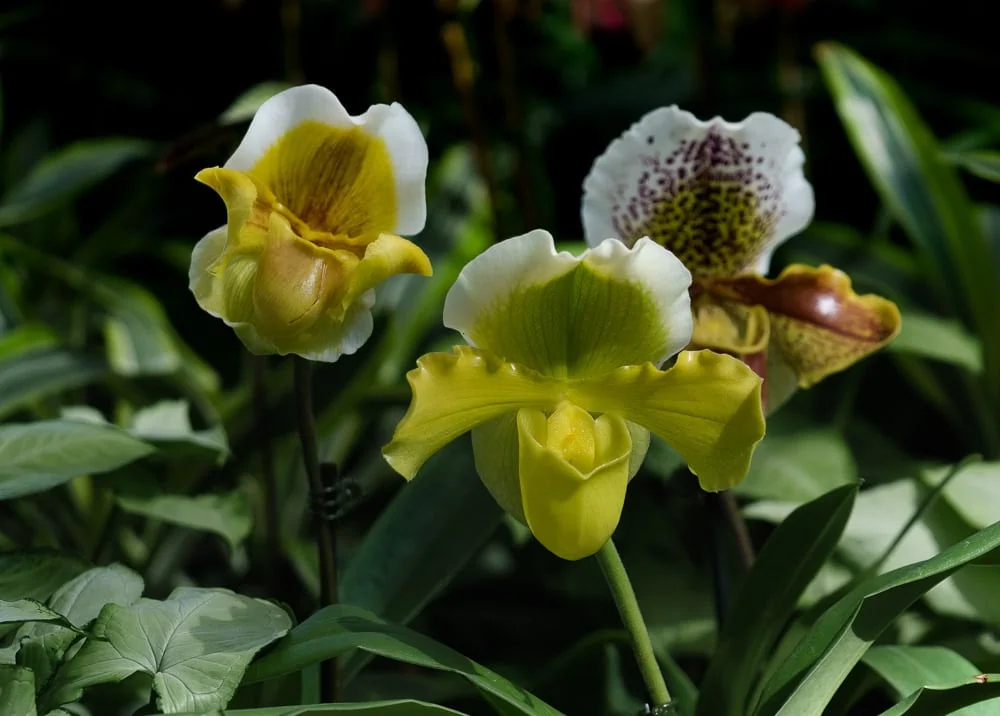
The orchid family, the largest and most diverse in the plant world, comprises over 25,000 species. With orchids accounting for about 8 percent of all flowering plant species.
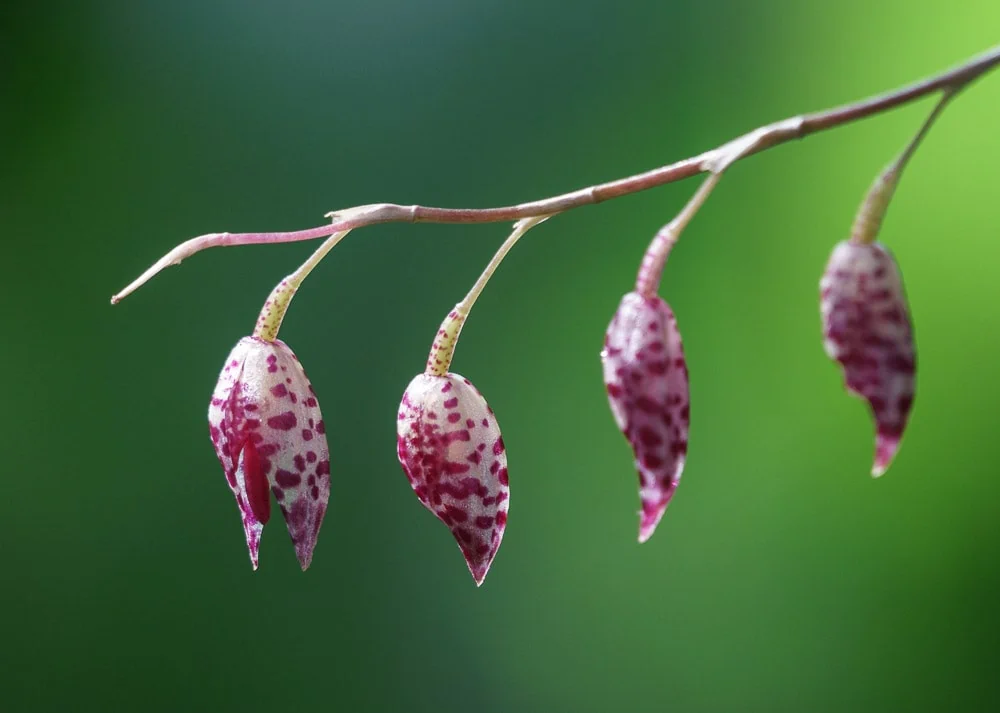
The Center’s collection, composed of more than 2,000 species, showcases this tremendous diversity.
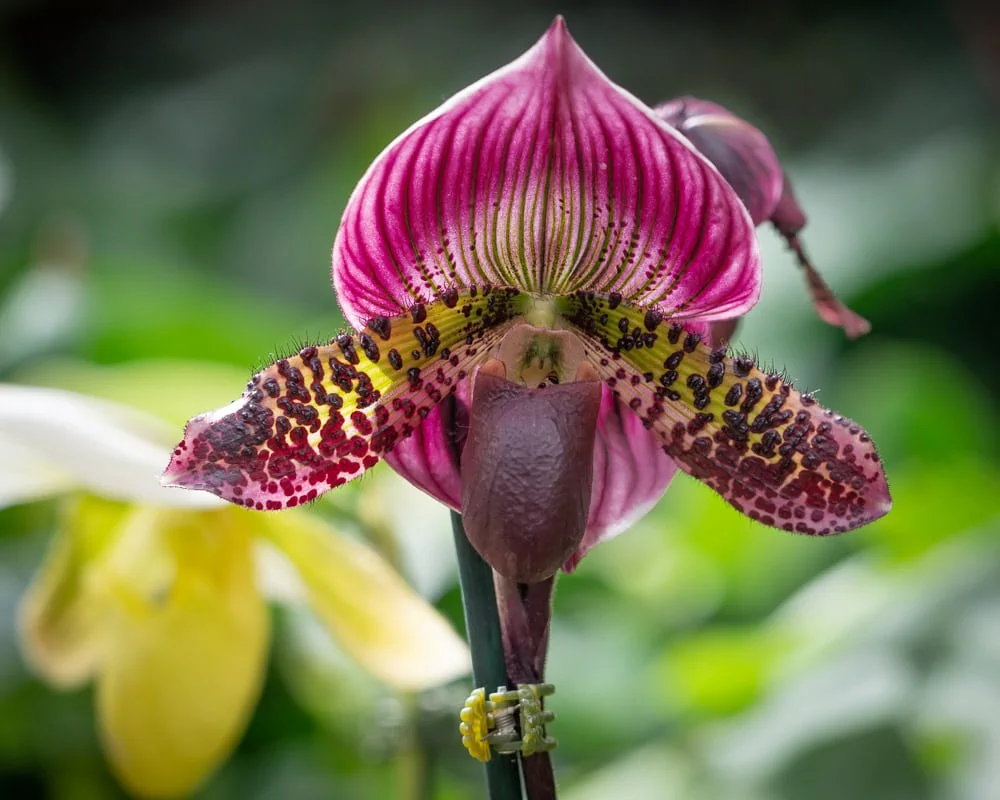
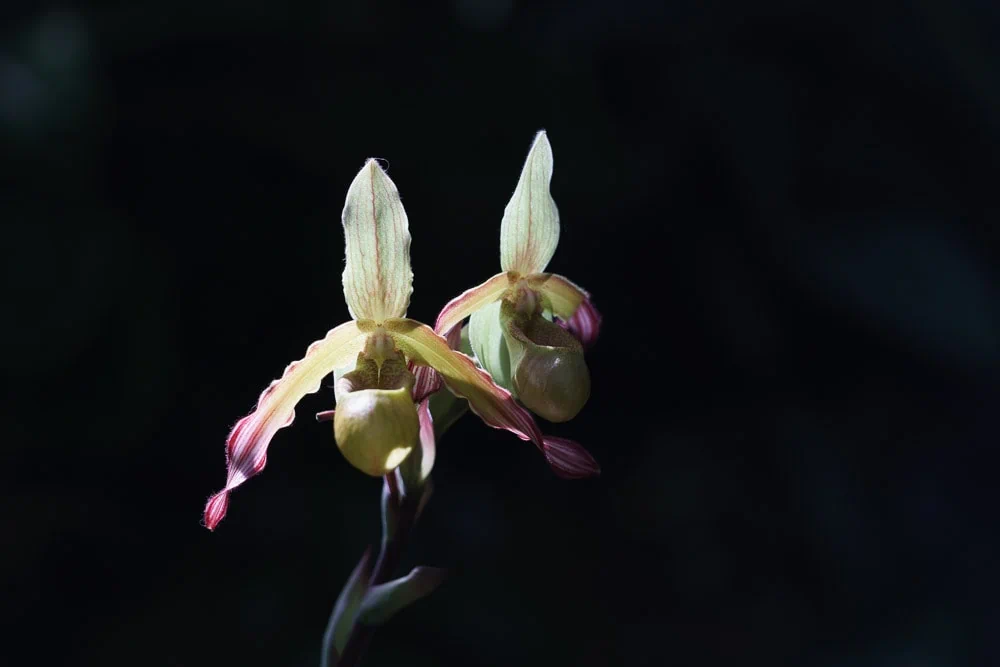
Desert House
The Desert House is a beautiful look into this harsh, fascinating planet. It explores the different ways that plants survive in the desert.
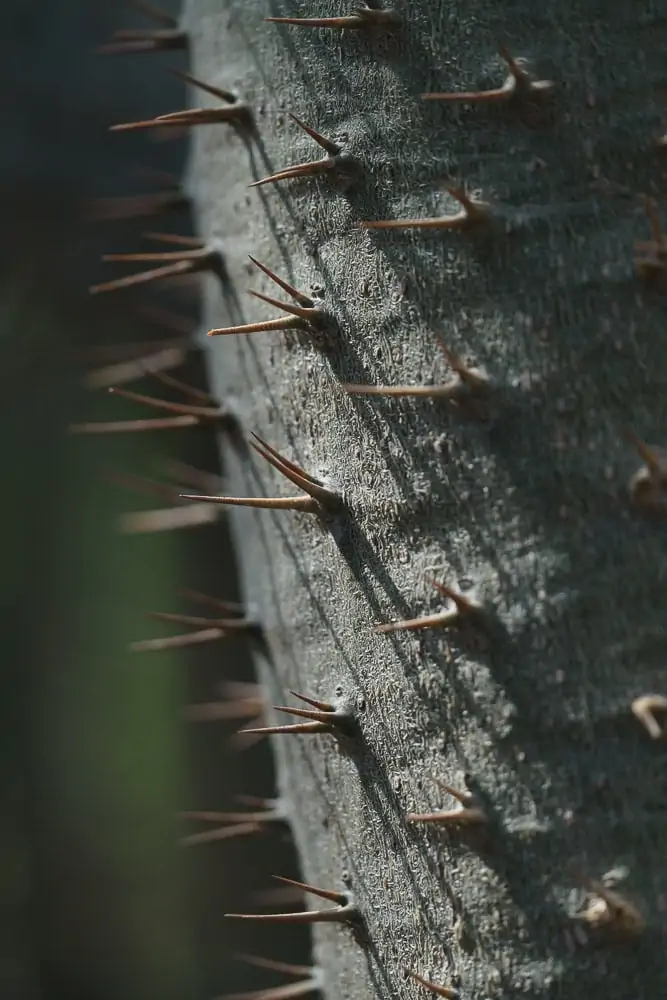
There are no cacti in the Desert House. Succulents from several arid areas such as Madagascar and southern Africa make up most of these plants.

Kendeda Canopy Walk
The skywalk features a suspension bridge with towering masts that seem to disappear among the trees. It is one of the United States’ biggest tree canopy-level walkways. The steel and concrete structure descends to Sourwood Terrace, providing a connection to all the woodlands gardens below.
Cascades Garden & Earth Goddess
Again, foiled by the timing of this visit, the beautiful Earth Goddess installation was dormant. This 25-foot tall statue is made from welded thin rods and sheet steel filled with soil to create a framework for the 18,000 annual plants.
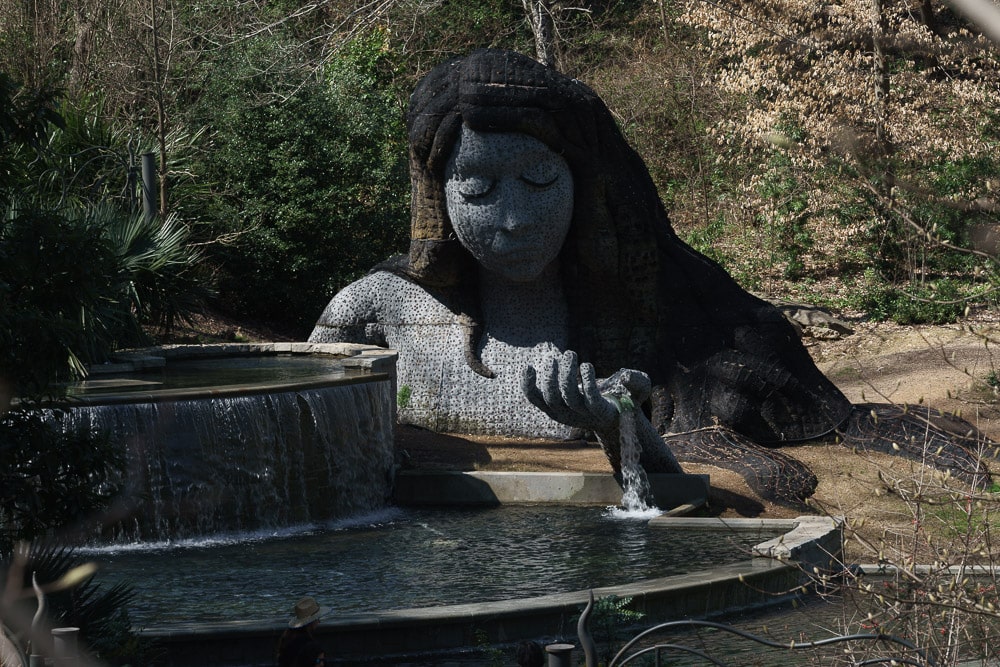
While she’s not impressive off-season, here’s what she looks like in season. She’s beautiful and well worth heading back to see.
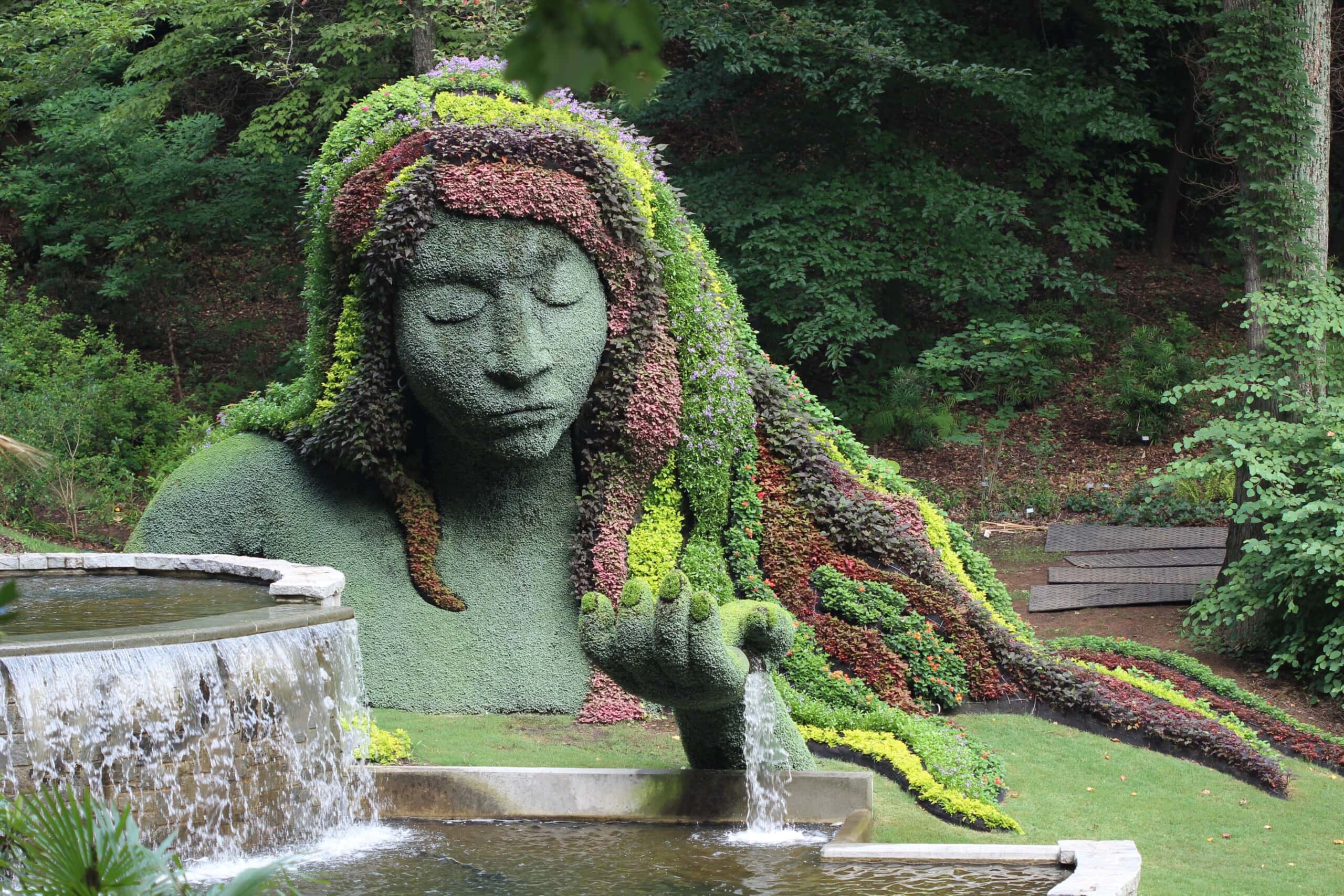
Storza Woods
Beyond the Earth Goddess (that sounds like a book title) is the Storza Woods. It is one of the few remaining secondary growth mature hardwood forests in the City of Atlanta.
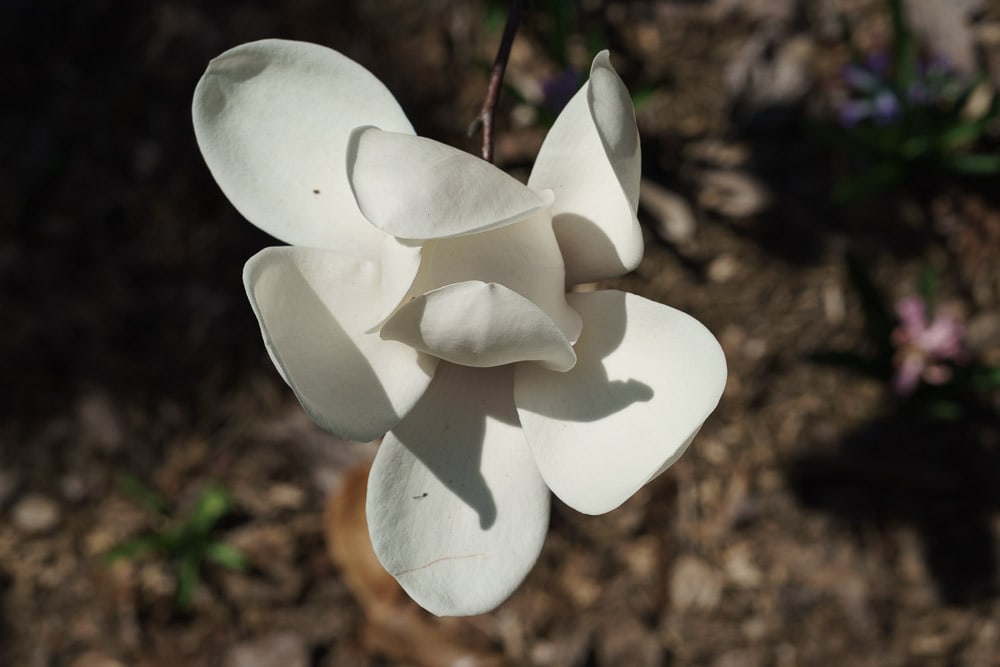
The woods contain multiple gardens, including the Azalea and Camellia walks and the beautiful Glade Garden.
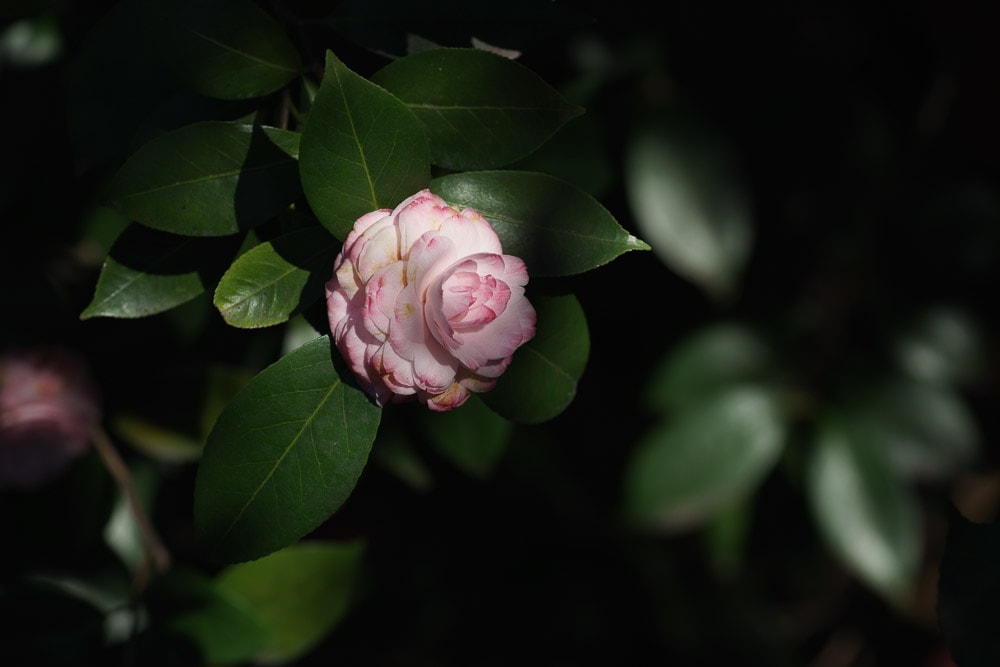
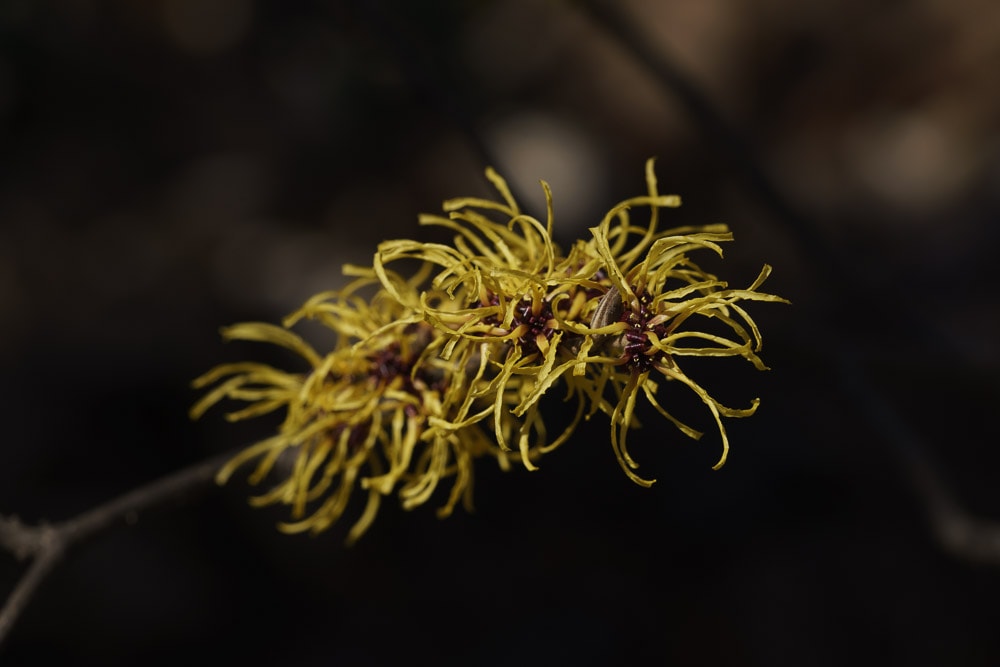
Glade Garden –
Unfortunately, the star of the Glade Garden, Chihuly’s Saffron Tower, a 30-foot-tall, 3,660-watt neon glass sculpture, did not live up to being in the woods. Since it could no longer light up and function properly, the sculpture was removed in 2021.
Fortunately, the artist was able to create a replacement to stand tall over the reflecting pool. Now the new Yellow Icicle tower, a beautiful spikey piece that glistens in the sunlight, stands as a majestic tribute to the trees around it.
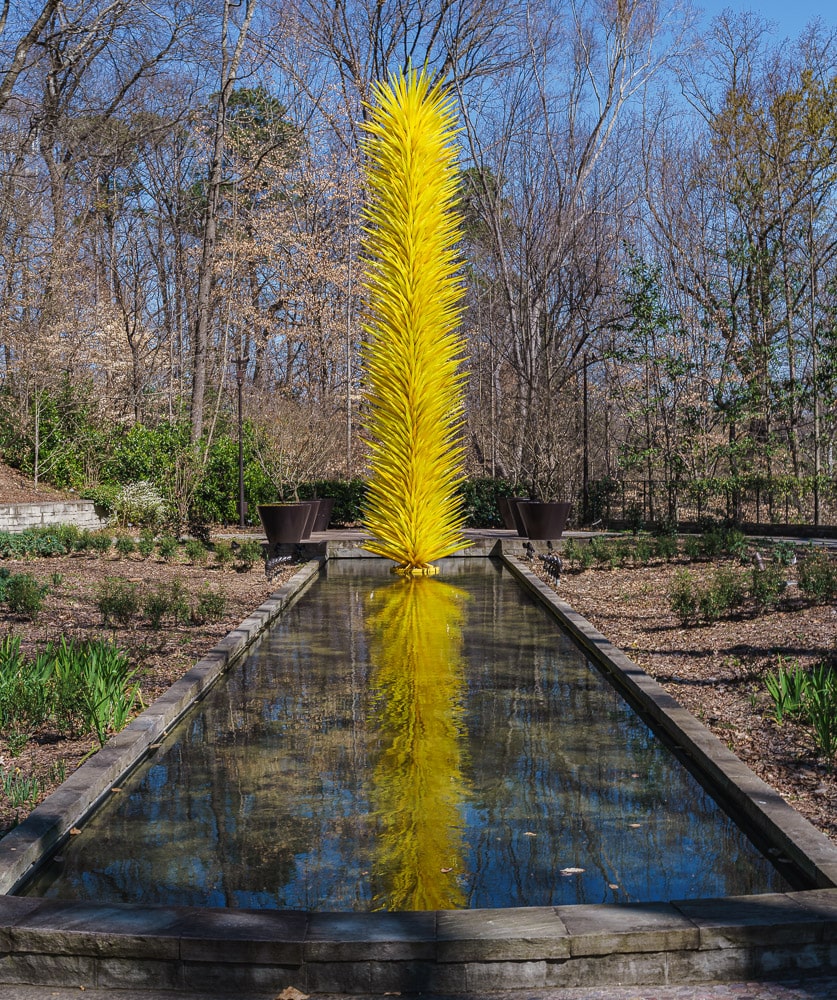
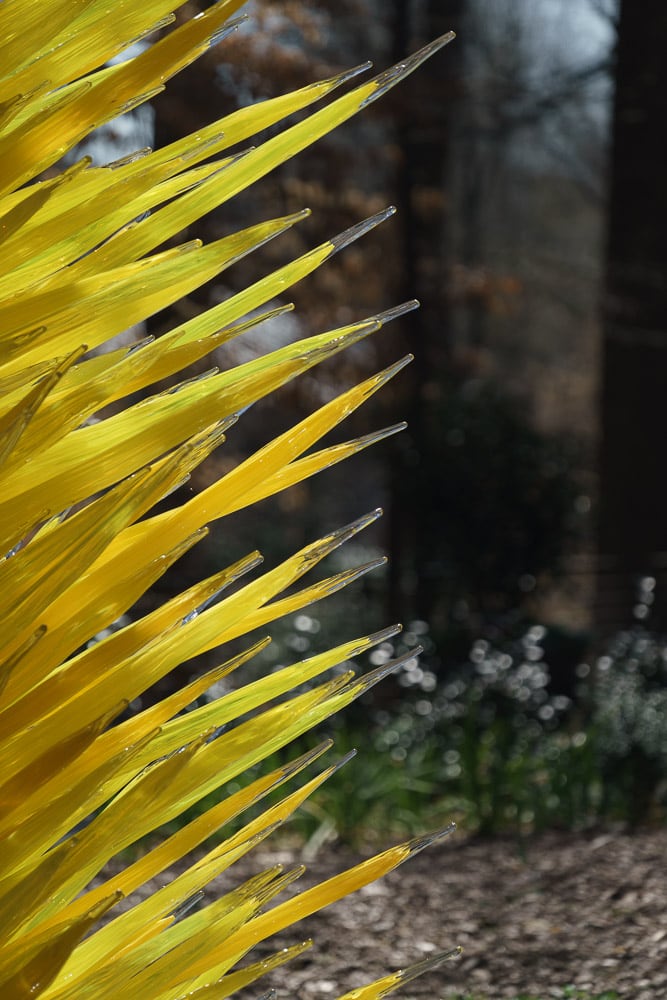
Atlanta Botanical Garden Wrap Up
Atlanta Botanical Garden is one of the most diverse and beautiful botanical gardens in Atlanta, with many flowers, plants, trees, trails, and waterfalls. As someone who was not able to see everything because of the time of year, I would highly recommend a visit in the spring or summer so you can see all the Atlanta Botanical Garden has to offer. I know I’ll be back next time I visit.
Where is this?
Please visit the Atlanta Botanical Gardens website to get more information on the gardens.

